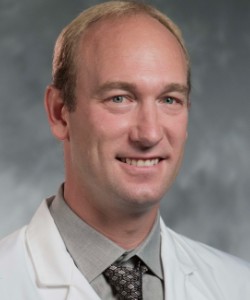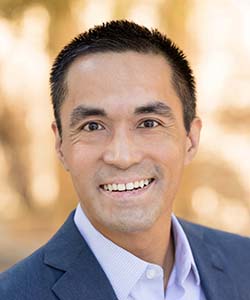Changes in Coding and Payment for Neuromodulation Procedures in 2024
Cite as: Vorenkamp K, Mariano E. Changes in coding and payment for neuromodulation procedures in 2024. ASRA Pain Medicine News 2024;49. https://doi.org/10.52211/asra080124.009.
Effective January 1, 2024, CPT® coding changes have been implemented to differentiate implantation of “traditional” versus integrated neurostimulation systems for spinal cord and peripheral nerve stimulation systems. The introductory language has been modified in the CPT 2024 Professional Edition to describe these changes better. The language has been modified for the pulse generator codes to include “requiring pocket creation and connection between the electrode array and pulse generator or receiver.” This affects the existing codes 63685, 63688, 64590, and 64595, as these codes are restricted to systems where the generator/receiver is separate from the electrode array.
New codes were also created for insertion/replacement and revision/removal of a percutaneous electrode array with integrated neurostimulator for spinal cord stimulation (Category III codes) and peripheral nerve stimulation procedures (Category I codes). These codes cannot be used for procedures using integrated devices on the sacral nerve (which will be reported using the new Category III codes 0786T-0790T, percutaneous implantation of neurostimulator, sacral, with integrated neurostimulator) or tibial nerve if being used for bladder dysfunction (which will be reported using the new Category III codes 0816T-0819T, described in more detail below). Additionally, category III CPT codes were added to describe simple (0589T) and complex (0590T) programming of integrated spinal cord stimulator systems.
The table below lists the existing, modified, and new codes related to spinal cord and peripheral nerve stimulation. Although the code descriptors are abbreviated, it should be noted that fluoroscopy guidance is inherent to these codes and not separately reportable. Also displayed are the work relative value units (wRVU) and global reporting periods associated with these procedures. Additionally, the electronic analysis and programming codes (95970-95972) apply to all the Category I codes displayed, but the new Category III analysis/reprogramming codes (0589T, 0590T) should be used for reporting for patients with integrated spinal cord stimulation systems.
For a general overview of all 2024 fee schedule changes, view our update in the Practice Management Resource Center, or view a detailed and comprehensive list directly by clicking here (login required).
New/Revised CPT/HCPCS Code for 2024
(items crossed out are removed, items underlined are new)
| CPT® code | CPT® Description | 2024 wRVU (2023 wRVU) | Global Period (Days) |
Spinal Cord Stimulation | |||
| 63650 | Percutaneous implantation of neurostimulator electrode array, epidural | 7.15 | 10 |
| 63655 | Laminectomy for implantation of neurostimulator electrodes, plate/paddle, epidural | 10.92 | 90 |
| 63661 | Removal of spinal neurostimulator electrode percutaneous array(s) | 5.08 | 10 |
| 63662 | Removal of spinal neurostimulator electrode plate/paddle(s) placed via laminotomy or laminectomy | 11.00 | 90 |
| 63663 | Revision including replacement, when performed, of spinal neurostimulator electrode percutaneous array(s) | 7.75 | 10 |
| 63664 | Revision including replacement, when performed, of spinal neurostimulator electrode plate/paddle(s) placed via laminotomy or laminectomy | 11.52 | 90 |
| 63685 | Insertion or replacement of spinal neurostimulator pulse generator or receiver direct or inductive coupling requiring pocket creation and connection between the electrode array and pulse generator or receiver | 5.19 | 10 |
| 63688 | Revision or removal of implanted spinal neurostimulator pulse generator or receiver, with detachable connection to electrode array | 4.35 (5.30) | 10 |
| 0784T | Insertion or replacement of percutaneous electrode array, spinal, with integrated neurostimulator, including imaging guidance, when performed | N/A (New code in 2024) | N/A |
| 0785T | Revision or removal of neurostimulator electrode array, spinal, with integrated neurostimulator | N/A (New code in 2024) | N/A |
Peripheral Nerve Stimulation | |||
| 64553 | Percutaneous implantation of neurostimulator electrode array; cranial nerve | 6.13 | 10 |
| 64555 | Percutaneous implantation of neurostimulator electrode array; peripheral nerve (excludes sacral) | 5.76 | 10 |
| 64575 | Open implantation of neurostimulator electrode array; peripheral nerve (excludes sacral) | 4.42 | 90 |
| 64585 | Revision or removal of peripheral neurostimulator electrode array | 2.11 | 10 |
| 64590 | Insertion or replacement of peripheral, sacral, or gastric neurostimulator pulse generator or receiver, direct or inductive coupling, requiring pocket creation and connection between the electrode array and pulse generator or receiver | 5.10 (2.45) | 10 |
| 64595 | Revision or removal of peripheral, sacral, or gastric neurostimulator pulse generator or receiver, with detachable connection to electrode array | 3.79 (1.78) | 10 |
| 64596 | Insertion or replacement of percutaneous electrode array, peripheral nerve, with integrated neurostimulator including imaging guidance, when performed; initial electrode array | Carrier priced (New code in 2024) | 10 |
| 64597 | Insertion or replacement of percutaneous electrode array, peripheral nerve, with integrated neurostimulator including imaging guidance, when performed; each additional electrode array (List separately in addition to primary procedure) | Carrier Priced (New code in 2024) | 10 |
| 64598 | Revision or removal of neurostimulator electrode array, peripheral nerve, with integrated neurostimulator | Carrier Priced (New code in 2024) | 10 |

